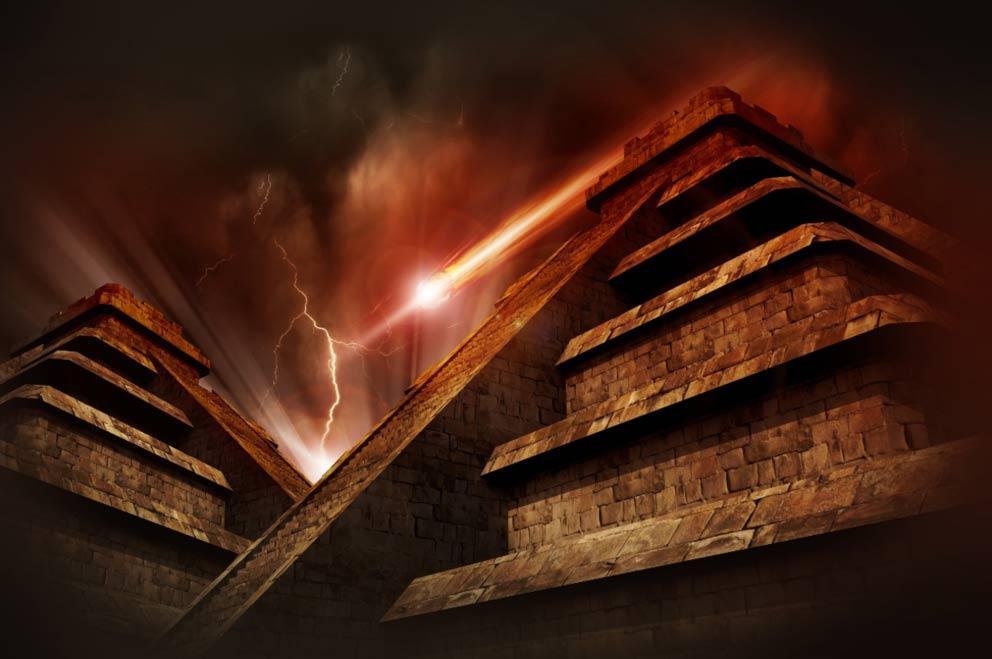How it ends: the ancient roots of doomsday prophecies and end of the world beliefs
Hollywood’s obsession with the End of Times is not over yet – Armageddon, Deep Impact, Doomsday, Legion, Thor: Ragnarok and 28 Days Later, are just a few of the blockbusters, out of hundreds, that deal with mankind’s demise. And now, yet another apocalyptic film is set to be released. ‘ How it Ends ’ imagines how a sudden societal collapse could occur in the modern U.S. as a result of a geological apocalypse. But man’s obsession with the end of the world is not a new one.
Doomsday prophecies are as old as recorded time. For as long as humans have existed, there has been a fear of an apocalypse or ‘end of times’, when the gods wish vengeance upon their people, when humans pay for the sins of their fathers and forefathers, and when the demons of the world rise up and devour all that is good. Prophecies of the end of times stem from the mythologies of civilizations past: the Norse story of Ragnarök, the tale of Noah and the Flood, and the Biblical apocalypse. Though these civilizations are all thousands of years in the past, the same fear that drove them to make these myths—the fear of the unknown—continues to haunt the human race today.
Supposedly, the earliest prediction of the end of the world came from the Assyrians, a powerful Mesopotamian culture that lasted for roughly two thousand years. A tablet was found dating back to sometime between 2800 and 2500 BCE that bears the first known prophecy of the end of days. According to the translation, it claims that the earth was in its final days in those years, and that the world was slowly deteriorating into a corrupt society that would only end with its destruction. Though it is not known who wrote this inscription, and where specifically the tablet came from, it is a fervent example of how far back in human history apocalyptic prophecies world began.
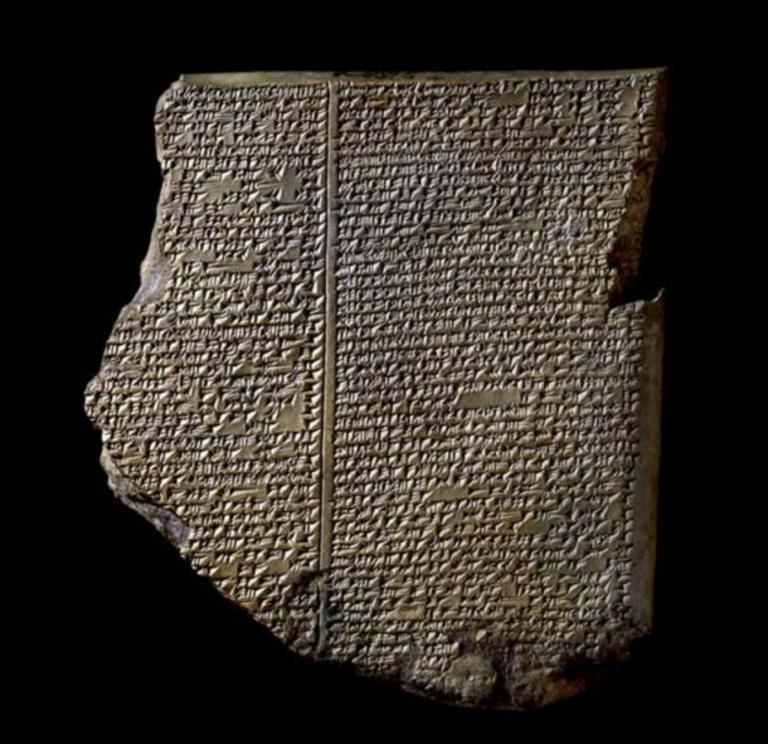 An Assyrian Tablet from 2800 BC bears the first known prophecy of the end of the world.
An Assyrian Tablet from 2800 BC bears the first known prophecy of the end of the world.
In Norse mythology, Ragnarok is a series of apocalyptic events that will define the end of the world, where giants of frost and fire will together fight the gods in a final battle that will ultimately destroy the planet, submerging it under water. According to the legend, the world will resurface, the surviving and returning gods will meet, and the world will be repopulated by two human survivors.
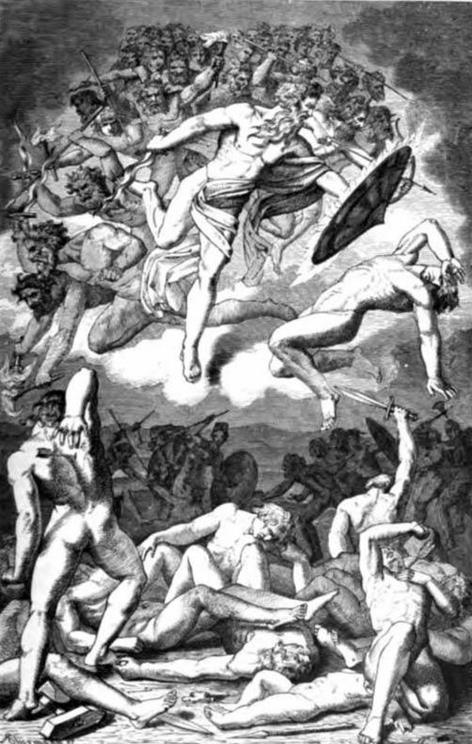 'The downfall of the AEsir'. The heavens split and the 'Sons of Múspell' ride forth upon the AEsir at Ragnarö. The Norse apocalyptic battle, Ragnarok.
'The downfall of the AEsir'. The heavens split and the 'Sons of Múspell' ride forth upon the AEsir at Ragnarö. The Norse apocalyptic battle, Ragnarok.
Numerous other prophecies have appeared throughout history pertaining explicitly to the mortal fear of the ‘Second Coming of Christ’ —the belief that a day will come when humankind would be judged for all of their sins, and Christ would battle the Anti-Christ, Satan, and a False Prophet in the biblical Armageddon. The Four Horsemen, traditionally named War, Famine, Pestilence, and Death, will ride during the Apocalypse. Most, if not all, prophets claimed that preceding the enormous battle would be the Rapture, where the purest of humankind would be removed from the Earth before the battle between Christ and the Anti-Christ. The expectation of this event and the fear of what would happen to humankind during it called for various people from numerous religious and ethnical backgrounds to try to predict the event so those alive could prepare for what they believed was an inevitable end, and so those soon to be born could be taught to live a pious life to survive such an ending. The belief in Armageddon and the Rapture primarily stems from the Bible and biblical translators and interpreters, however the cryptic and symbolic language used in the text creates quandaries about the appropriate date and time of the so-called Second Coming.
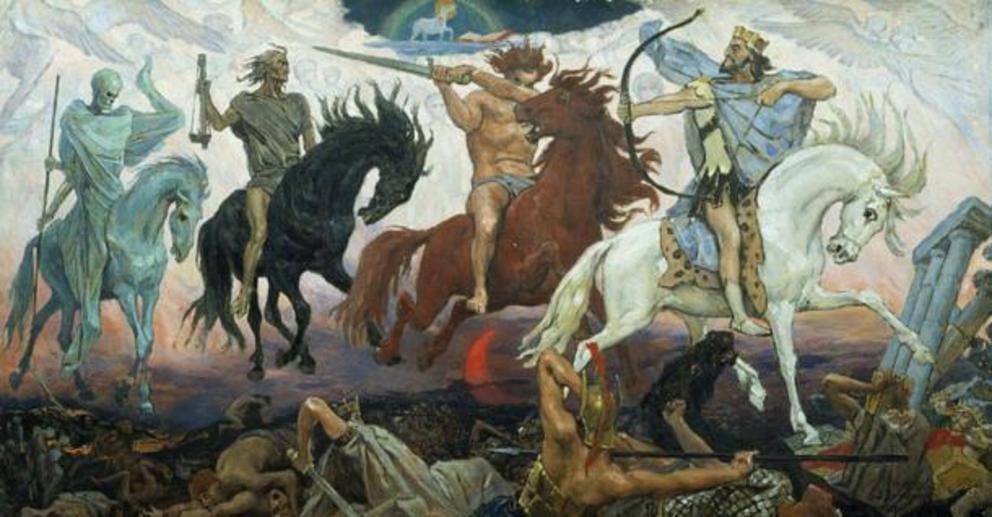 Four Horsemen of Apocalypse, by Viktor Vasnetsov. Painted in 1887.
Four Horsemen of Apocalypse, by Viktor Vasnetsov. Painted in 1887.
It was also feared for a long time that the year 1000 AD would be the end of the world. Y2K created the same type of millennia fear, as it was assumed that the '00 of 2000 would be misread in computers as 1900 and create a bug that would force all technology to fail, causing worldwide confusion and tremendous destruction. New millennia, years ending in '99, and the beginning of new centuries have all been subject to doomsday prophecies in the past, and the present era is no exception to that. Uncertainties about the future continue to plague the human race, such as the recent belief that cataclysmic events would transpire on or around 21 December 2012, a date regarded as the end-date of a 5,126-year-long cycle in the Mesoamerican Long Count calendar.
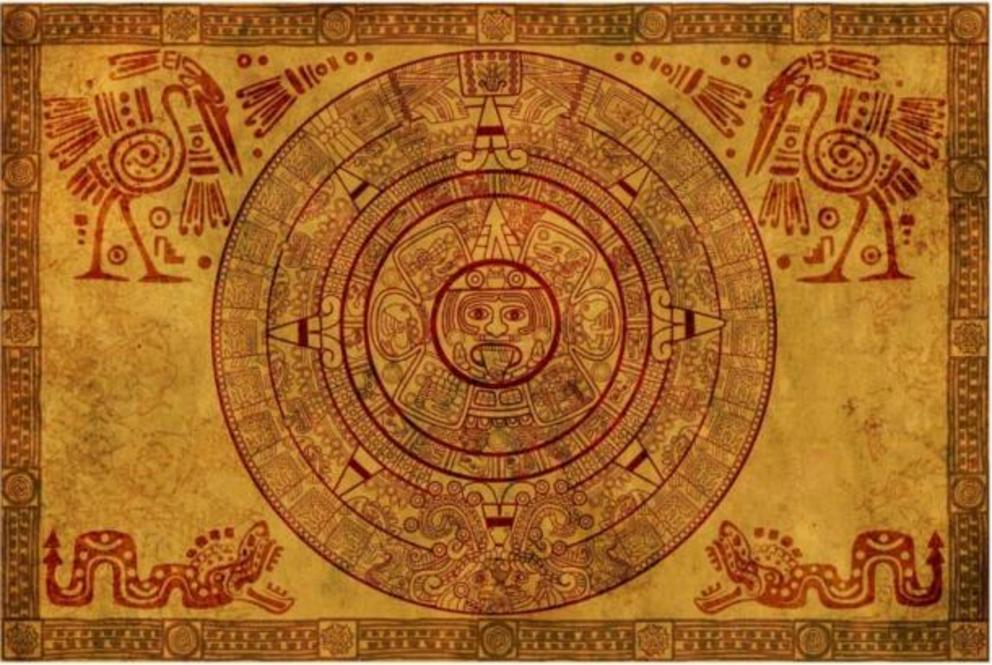 Mayan calendar on parchment.
Mayan calendar on parchment.
More recently, there has been a doomsday theory put forward in relation to the four blood moons appearing in the twelve months between April 2014 and September 2015, which are said to be an indication of the end because such an occurrence is so rare. Despite the advancement of the human race, and the technological tracking abilities at their disposal, new and unknown events and situation remain terrifying, leading many people around the world, known as ‘Doomsday Preppers’ to continue preparing for the ‘end of the world as we know it’, seeing such as efforts as a more ideal option than risking being blindsided.
It is clear that fear is the driving factor behind the prophecies of doomsday throughout human history. The effort of mapping out the future—when the end will come, how the end will come, and who will survive it—is, and has always been, an attempt to outsmart circumstances that are not within human control and cannot be within human control. Though many people know and understand this, it has never stopped humans from trying to predict the outcome. It is safe to say that as long as life on earth continues to grow and thrive and even encounter devastating calamities, doomsday prophecies will continue to prevail.
For the rest of this article please go to source link below.

